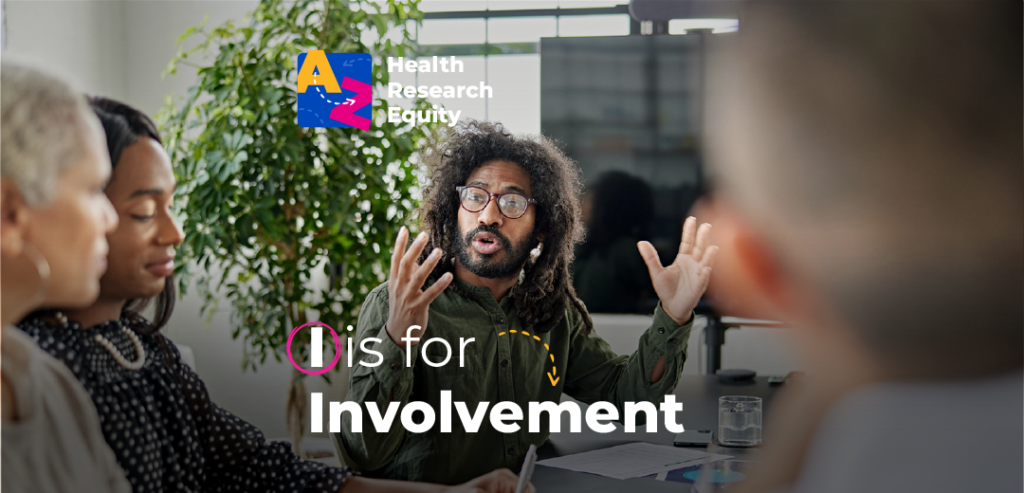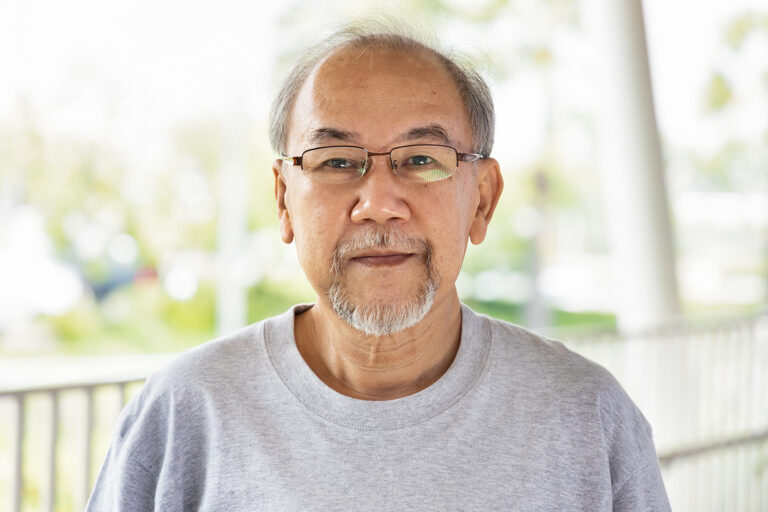Welcome back to our A–Z of Health Research Equity blog series! Since the last instalment of this series, H is for History, I had the pleasure of attending the 17th annual Health Services Research UK (HSR UK) conference, which took place in Oxford earlier this month. The 3-day event included presentations, workshops, and panel discussions, covering key issues in health and care services research, policy, and practice.
Here I’m going to share my post-conference reflections on the topic of Involvement.
The process of embedding involvement into research is known as Patient and Public Involvement (also referred to as PPI). This means working together with patients, care partners, and the wider community support available to patients, to shape, influence, and guide research. Put simply, it is an approach to research underpinned by the phrase: ‘nothing about us without us.’

Image credit: Disabled People Fight Back banner by Ed Hall, 2015. Image courtesy of People’s History Museum.
Involvement was a main theme at this year’s HSR UK conference, and I was happy to see patients and care partners leading many of the sessions. Below I will discuss some of my session highlights with a summary of the key themes that we should all consider for Involvement.
Session highlights
Title: Reflecting on challenges and aspects of duty of care in research co-production with lay representatives
Presenters: Agata Pacho (Research Fellow at the London School of Hygiene and Tropical Medicine), and Sandra Paget (Public Contributor).
Summary: This workshop has been simmering away in my brain for weeks now. Agata and Sandra highlighted an issue that is so often avoided: if the involvement process goes wrong, it is often the patient that suffers most. They explained that the idea of ‘duty of care’ is dependent on context, and that failing to meet these obligations has the potential to lead not only to upset or frustration, but to injury.
Key themes:
- Injury is not purely physical and comes in many different forms, the potential for psychological and emotional injuries because of research participation can be significant.
- Even well-designed research facilitated by compassionate and well-trained teams can cause distress for participants, it is important to provide opportunities for reflection and learning throughout.
- As Sandra said at the beginning of the workshop, “there is often a disconnect between researcher’s expectations and the realities of disabled people”. This is something I work hard to remember, both as a researcher and as someone coming to terms with their own disability. A process that is accessible to one person can be deeply exclusionary to another, tailoring processes and offering options is key.
Title: Reasons not to do public involvement (and why you should do it anyway)
Presenters: Lynn Laidlaw (Patient Contributor and Researcher), Dr Louca-Mai Brady (Senior Research Fellow, University of Hertfordshire), Dr Stan Papoulias (User/survivor Researcher and Research Fellow at King’s College London, and Theme Lead for PPI Research at ARC South London).
Summary: This interactive session shone light on the arguments against involving patients and members of the public in research. Participants, me included, shared frustrations collected over the course of our careers, but my favourite part was that we conspired together, sharing tips and tricks on how we’ve navigated these frustrations to embed patient voices in our work.
Key themes:
- The research population are not ‘hard to reach’. Regularly reflecting on your practice is important; there will inevitably come a time when you get comfortable and do what you’ve always done. Remain teachable and lean on others to support and teach you when you are working with a new-to-you patient group.
- Patient and public contributors often suffer from the Goldilocks effect. They are deemed not representative, too professionalised, or not experienced enough. This is troubling and risks patients being excluded from research involvement if they aren’t ‘just right’. All patients need to be heard, and there is room for everyone.
- Hierarchy, perceived or otherwise, has the potential to sink a project. Ensuring that everyone is working in a role that supports them to contribute effectively is key, however, it’s equally as important that everyone understands where they fit into the bigger picture and function of the team.
Title: How can health research be made more Inclusive research?
Presenters: Dr Shoba Dawson (Senior Research Fellow, University of Sheffield), Trishna Bharadia (PPI Contributor), and Dr Heidi Green (Director of Health Research Equity, COUCH Health) – ok this is a cheeky addition because I was presenting, but I couldn’t not include it!

Image credit: Trishna Bharadia.
Summary: We framed this session around a completed clinical trial and intentionally designed it to maximise discussion time. Focusing conversations on a trial that none of us were involved in meant that we were able to critique and evaluate it more objectively. We shared ideas and explored ways that the trial could have been made more inclusive.
Key themes:
- ‘Inclusive’ is a broad, and sometimes vague, concept. It is important that research is designed to be inclusive, but we must go one step further to understand who is most likely to benefit from the research. Once we know this, efforts to support inclusivity can then be tailored with this group of patients in mind.
- Research runs the risk of becoming transactional as budgets are squeezed and timelines shortened. We must work hard to stop this from happening, maintaining humanity and kindness in our work.
- There are areas of trial design that feel as though they are part of the furniture. These areas reflect what ‘we’ve always done’ and are ripe for improvements. Reviewing our research designs with thought and intention – and insights from patients – has the potential to make significant positive change.
HSR UK is over for another year, and I’m already looking forward to next year. For HSR UK to focus much of the program on the conversations that have so far felt a little underground, was welcome, and enabled both researchers and patients to explore the process of facilitating safe and insightful patient involvement.









